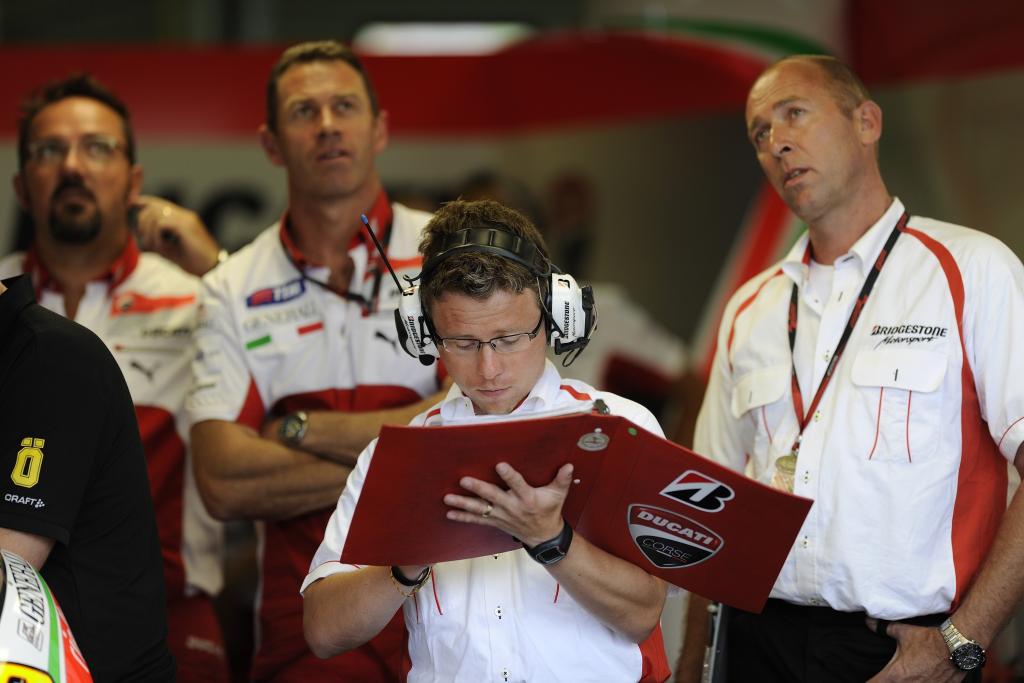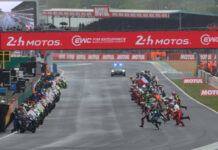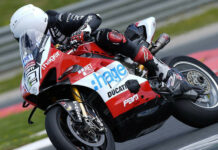Brno MotoGP™ debrief with Shinji Aoki Wednesday 29 August 2012 Bridgestone slick compounds available: Front: Soft, Medium, Extra-hard. Rear: Medium, Hard (Asymmetric) Bridgestone wet tyre compounds available: Soft (Main), Hard (Alternative) Last Sunday’s Czech Republic Grand Prix was won by Repsol Honda’s Dani Pedrosa who engaged in a thrilling last lap duel with Yamaha Factory Racing’s Jorge Lorenzo who finished second, while Cal Crutchlow’s scored his first ever MotoGP™ podium as he rode the Monster Yamaha Tech3 M1 to third place. Conditions for this year’s Czech Republic Grand Prix were somewhat more challenging than last year, with a peak track temperature 14°C lower than last year and reduced grip levels due to heavy overnight rain on Friday and Saturday that washed away any rubber deposited on track during practice and qualifying. With grip levels not as good as previous years and cooler temperatures, all riders opted for the greater edge grip and warm-up performance of the softer rear slick for the race while front tyre choice was also consistent across the grid, with every rider preferring the greater front-end stability provided by the harder option front slick. Pedrosa’s third win of the season sees the gap between him and Lorenzo shrink to just thirteen points with six rounds remaining and despite being missing the Czech Republic Grand Prix due to injury, Repsol Honda’s Casey Stoner remains third overall in the standings. Q&A with Shinji Aoki – Manager, Bridgestone Motorsport Tyre Development Department Brno was the first time this season we saw every rider on the grid select the same tyre combination for the race; what was it about this race that caused this to happen? “Track temperatures for this year’s race at Brno were considerably cooler than last year and the overnight rain on Saturday meant track conditions for the race were not at their best. In such conditions, riders need greater warm-up performance, particularly at the rear, and so the softer rear slick was the tyre the riders felt more comfortable with. Riders will always seek tyres with greater grip and warm-up performance, but there is always the balance between grip and durability to be considered and so for the race, many works riders select harder compounds to ensure adequate abrasion resistance. However, the lower temperatures at this year’s Czech Grand Prix meant that abrasion levels weren’t as high as would normally be encountered, so all riders on the grid could select the softer rear slick for the race. “For the front tyre, even though conditions were cool, all riders felt more comfortable on the harder front slick. Although this option offers slightly less warm-up performance than the softer front slick, the extra stability it provides through the many quick changes of direction in the left-right corner combinations and braking in downhill sections, made it the better choice for riders at Brno.” Usually we see most of the more powerful ‘works’ bikes select the harder rear option for the race, while the majority of the CRT entries go for the softer rear slicks. How much of an effect did track temperature have on tyre choice? “At Brno the lower track temperature was the major factor in the works riders selecting the softer slick, and if temperatures were at the same level as last year we probably would have seen some riders select the harder rear option. The heat generated by a tyre is largely due to the forces imposed on the rear tyre by the motorcycle itself, and these forces tend to be greater for the works bikes, in combination with the temperature of the tarmac. If the track temperature is lower than normal, than for a given motorcycle and rider combination, the potential for overall tyre temperature is also reduced. So even though works bikes place more load on the rear tyre than the CRT bikes due to their greater performance, the lower track temperatures at Brno meant that the sustained tyre temperatures for all riders was within the optimum operating window for the medium compound rear slick, which was the softer option at Brno.” Bridgestone brought newly-developed tyres to the Brno test. What specific changes did these tyres have and did you receive any feedback from riders on how they performed? “The experimental tyres we supplied for the Brno test featured a new rubber compound. This is a hard compound rubber which is closer to composition to the medium compound than our current hard specification and was developed to deliver a more consistent gap between our different compound options. However, the weather on Monday wasn’t ideal to utilise hard compounds, so only three riders chose to use the experimental tyres as part of their test programme. “The feedback from these riders was that there was an improvement in warm-up performance compared to the existing hard compound, but in order to test this new compound in more relevant conditions and acquire more meaningful data, we will make this test tyre available at the private tests at Aragon in early September where Honda and Yamaha will be testing, so we will have a better idea of the compound’s potential after these tests conclude.”
Bridgestone: Every Rider On The MotoGP Grid At Brno Chose The Same Tire Combination
Bridgestone: Every Rider On The MotoGP Grid At Brno Chose The Same Tire Combination
© 2012, Roadracing World Publishing, Inc.






